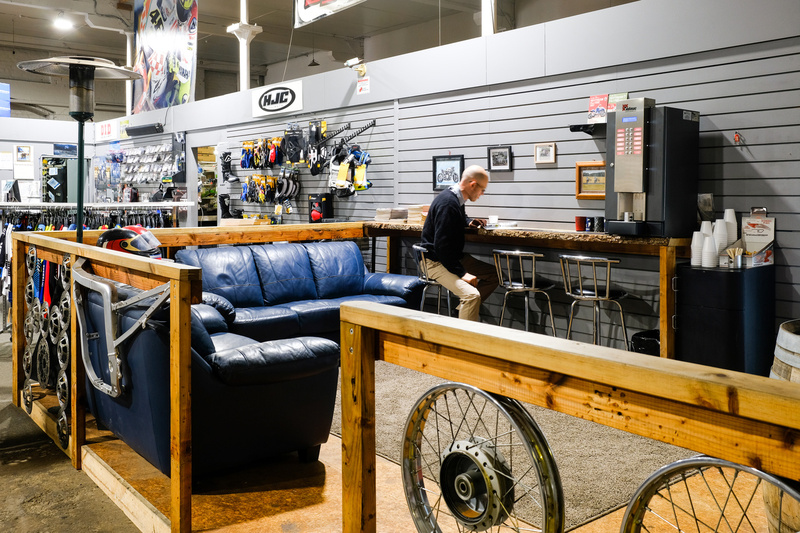Shop the Best MX Parts NZ for Your High-Performance Bike
Shop the Best MX Parts NZ for Your High-Performance Bike
Blog Article
Comprehending the Important Parts of a Bike: A Comprehensive Guide for Fanatics
For bike fanatics wanting to elevate their riding experience and ensure their bikes run efficiently, comprehending the important parts of a motorcycle is extremely important. Each component, from the engine's elaborate workings to the essential duty of the stopping systems, not just impacts efficiency yet likewise safety and security and convenience. This guide will go through the basic parts that every rider must be familiar with, allowing informed selections in both upkeep and prospective upgrades. As we start this expedition, one must ask: just how does each part communicate to develop the smooth ride every enthusiast looks for?
Engine Elements

The camshaft plays a critical duty in controlling the timing of the engine's shutoffs, guaranteeing the precise opening and closing needed for reliable fuel and air consumption, as well as exhaust expulsion. This timing is critical to preserving ideal engine performance and performance. Furthermore, the carburetor or fuel injection system, depending on the bike model, is in charge of mixing air with gas in the appropriate proportion for combustion.
The air conditioning system, either air or liquid-based, functions to preserve the engine's temperature level within operational limits, preventing getting too hot and making sure durability - motocross parts nz. Each part, thoroughly made and incorporated, contributes to the smooth procedure of the engine, defining the bike's power outcome and general efficiency
Transmission System
Indispensable to the motorcycle's performance, the transmission system makes certain reliable power transfer from the engine to the wheels. This system makes up numerous essential elements, consisting of the clutch, gearbox, and last drive, each playing a vital function in converting the engine's power into activity. The clutch, usually run by a hand bar, offers to involve and disengage the engine from the transmission, enabling for smooth gear modifications and controlled acceleration.
The gearbox, frequently referred to as the transmission proper, includes a collection of equipments that bikers can by hand move via to change the bike's rate and torque output. These gears are prepared in a series that enables the motorcycle to increase efficiently and preserve ideal engine performance across different speeds. Most motorcycles make use of a consecutive gearbox, requiring the cyclist to change gears in an established order.
Braking Mechanisms
While recognizing the transmission system is crucial to utilizing a bike's power, similarly important is the ability to control and stop that power efficiently, which is where braking devices come into play. Brakes are essential for security and efficiency, offering the rider with the essential control to navigate numerous surfaces and conditions. Generally, bikes feature 2 kinds of braking systems: disc brakes and drum brakes.
Disc brakes are extra prevalent in modern-day motorcycles as a result of their remarkable performance. They consist of a brake disc, caliper, and pads. When turned on, the caliper squeezes the brake pads against the rotating disc, converting kinetic power right into warm, thereby slowing down the wheel. This system offers much better heat dissipation, regular performance, and improved quiting power, particularly in damp conditions.
Conversely, drum brakes, though less typical, my site are still located in some motorcycles. They work by pressing brake footwear against the internal surface of a drum connected to the wheel. While normally less efficient in warmth dissipation and stopping power, drum brakes are less complex and much more cost-efficient.
Comprehending these stopping systems' subtleties permits cyclists to maintain their motorcycles correctly and appreciate the engineering that guarantees risk-free and effective quiting.
Suspension and Guiding
Suspension and guiding systems are essential parts that considerably influence a motorbike's handling and trip comfort. The shock absorber, including forks at the front and shock absorbers at the back, absorbs road irregularities, improving stability and control. Front forks, upside down or generally telescopic, compress and rebound to minimize effects, while back shock absorbers keep tire contact with the roadway, crucial for grip and security.
Steering, centered around the handlebars, attaches the cyclist to the bike's directional control. The guiding head bearings make sure smooth procedure, permitting exact ability to move. Correct placement and upkeep of these bearings are critical for foreseeable steering response and decreasing motorcyclist exhaustion.
The suspension's adjustability is one more crucial facet; preload, damping, and rebound settings allow modification to fit numerous riding designs and problems. This flexibility is important for optimizing performance, whether navigating city roads or dealing with sturdy tracks. Technologies like electronic shock absorber use real-time changes, improving trip quality across diverse terrains.

Electrical Solutions
After ensuring a regulated and smooth adventure through efficient suspension and steering systems, interest transforms to the electrical systems, an essential element of modern motorcycles. These systems play an essential duty not just in beginning the engine yet likewise in powering numerous components that improve the performance and safety of the motorcycle.
At the heart of a motorbike's electrical system is the battery, which stores electrical power essential for beginning the engine find and powering complementary systems - motocross gear. The alternator or generator, combined with the rectifier-regulator, guarantees the battery stays billed while the bike functions, converting mechanical power into electric energy and keeping voltage degrees
The ignition system, one more crucial element, is liable for stiring up the air-fuel dirt bike racing gear mix in the engine's cylinders. Modern motorcycles frequently use an electronic ignition system, offering higher effectiveness and dependability contrasted to conventional systems.
Lighting systems, consisting of headlights, tail lights, and signs, are likewise essential, making certain presence and security for the biker. Added digital elements such as sensing units, control units, and displays add to innovative functions like fuel injection monitoring, anti-lock stopping systems (ABDOMINAL MUSCLE), and digital dashboards, further boosting the riding experience.
Conclusion
A comprehensive comprehension of a motorcycle's vital components, including the engine, transmission system, stopping systems, suspension, steering, and electrical systems, is crucial for lovers intending to enhance safety, convenience, and efficiency. Mastery of these aspects enables for notified decisions pertaining to upkeep and upgrades, ultimately improving the riding experience. By incorporating this knowledge, riders can ensure their bikes operate at peak effectiveness and dependability, consequently maximizing both pleasure and longevity of their vehicles.
For motorbike lovers looking to raise their riding experience and guarantee their bikes run efficiently, recognizing the crucial components of a motorcycle is vital.Essential to the bike's capability, the transmission system ensures effective power transfer from the engine to the wheels.While comprehending the transmission system is essential to taking advantage of a motorcycle's power, just as crucial is the ability to manage and quit that power successfully, which is where stopping devices come into play. Commonly, bikes include 2 types of stopping systems: disc brakes and drum brakes.
A complete comprehension of a bike's vital components, including the engine, transmission system, stopping devices, suspension, steering, and electrical systems, is important for enthusiasts aiming to optimize convenience, safety, and efficiency.
Report this page